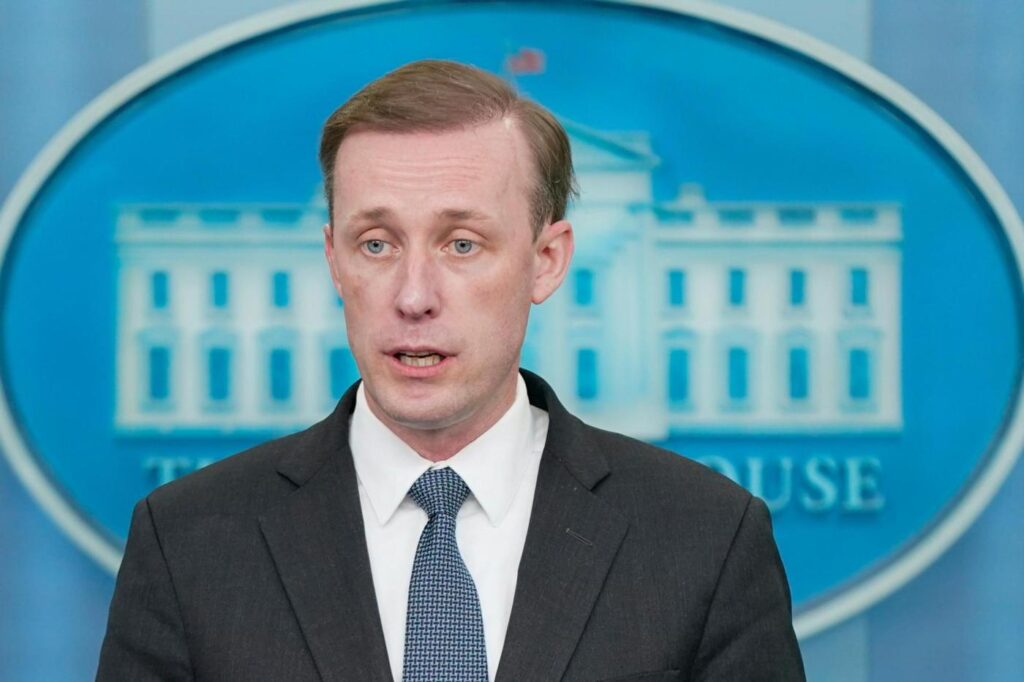
By AAMER MADHANI
WASHINGTON (AP) — President Joe Biden plans to announce new sanctions against Russia on Thursday while in Brussels for meetings with NATO and European allies, according to a top national security aide.
Biden, who will take part in a special meeting of NATO and address the European Council summit, is also expected to underscore efforts to enforce the avalanche of existing sanctions already announced by the U.S. and allies.
“He will join our partners in imposing further sanctions on Russia and tightening the existing sanctions to crack down on evasion and to ensure robust enforcement,” said White House national security adviser Jake Sullivan, who declined to further preview new sanctions the president will announce.
Biden is traveling to Brussels and Poland — which has received more than 2 million Ukrainian refugees who have fled since the Feb. 24 invasion — looking to press for continued unity among Western allies as Russia presses on with its brutal invasion of Ukraine.
In Poland, Biden will meet with Polish President Andrzej Duda, who has requested further U.S. aid and a stepped up military presence on NATO’s eastern flank as the war grinds on. The U.S. has already more than doubled its regular troop presence of more than 4,000 U.S. troops. Currently, there are about 10,000 U.S. troops in Poland.
Estonia, Latvia, Lithuania and Romania have also called for a greater NATO or U.S. military presence in recent weeks.
Sullivan suggested that could be coming soon as Biden plans to have talks “on longer term adjustments to NATO force posture on the eastern flank.”
“We feel that it is the right place for him to go to be able to see troops, to be able to see humanitarian experts and to be able to meet with a frontline and very vulnerable ally,” Sullivan said of Biden’s visit to Poland.
Talks on troop adjustments are already underway.
Last week, at NATO’s Brussels headquarters, U.S. Defense Secretary Lloyd Austin and his counterparts weighed what defenses to set up on the organization’s eastern flank, from Estonia in the north through Latvia, Lithuania and Poland down to Bulgaria and Romania on the Black Sea.
The aim is to deter President Vladimir Putin from ordering an invasion of any of the 30 allies; not just for the duration of this war but for the next 5-10 years. Before launching it, Putin had demanded that NATO stop expanding and withdraw its forces from the east. The opposite is happening.
In just the past two months, the U.S. presence in Europe has jumped from about 80,000 troops to about 100,000, which is nearly as many as were there in 1997 when the United States and its NATO allies began an expansion of the alliance that Putin says threatens Russia and must be reversed. By comparison, in 1991, the year the Soviet Union dissolved, the United States had 305,000 troops in Europe, including 224,000 in Germany alone, according to Pentagon records. The number then dropped steadily, reaching 101,000 in 2005 and about 64,000 as recently as 2020.
Biden and NATO have said repeatedly that while the U.S. and NATO will provide weapons and other defensive support to non-NATO member Ukraine, they are determined to avoid any escalation on behalf of Kyiv that risks a broader war with Russia.
Polish leaders have called for a Western peacekeeping mission to intervene in Ukraine, a step that the U.S. and other allies worry could lead to a broadening of the war.
Sullivan added that Biden will also “announce joint action on enhancing European energy security and reducing Europe’s dependence on Russian gas.”
—-
Associated Press writers Robert Burns and Colleen Long in Washington, and Lorne Cook in Brussels contributed.
